Sets in Magic the Gathering, Card Lists

Introduction, Part 5
This 5th article in the series of sets and symbols guides will cover a more modern age, from Ravnica: the city of guilds, to Nicol Bolas’s manipulations in the Shards of Alara. Read on to find interesting trivia and mechanics from each of the Magic the Gathering card sets.
Ravnica Block
Ravnica is a planet covered every inch in city, from the tall spires to the deep sewers, with little room left for nature. The city is split up into factions, each faction controlled by a guild. Each expansion in the block covered a few of those guilds, each of whom represent two colo
rs of mana. The plot centers around the Guildpact, a truce between each of the guilds for peace and prosperity, and machinations of some people to stop it from being renewed. Ravnica expands on the themes of multicolor interactions, and even introduces hybrid mana; mana that can be paid by one of two colors. Each guild has a similar layout of cards, including in each of them:
- A legendary leader
- A legendary champion
- A mana-producing signet artifact
- A land that bounces a land and comes into play tapped, but produces two mana, one of each guild color.
- A colorless land with a guild ability
- A two-color land that comes into play tapped unless you pay two life
- A rare guild artifact
- A hybrid-mana guildmage
Ravnica - The first set in the

block, Ravnica introduces the setting and the first set of guilds. Each guild has two colors of mana, a flavor and theme, and a mechanic all their own. Ravnica’s guilds are: The Boros, a red/white military soldier guild, police and peacekeepers. Their mechanic is Radiance, which allows a spell to target one creature and all others that share a color with it. The Golgari, a black-green guild that focuses on recycling, rebirth, and death as an essential part of life. Their mechanic, Dredge, allows a card to be returned from graveyard to hand, at the cost of milling cards. The Selesnya are green-white monks who believe in the greater good, reflected in their mechanic, Convoke. Convoke allows you to tap creatures in place of tapping lands to reduce the mana cost of large spells. Finally, the Dimir House, a blue-black guild of information, secrets, and espionage. Dimir’s mechanic is Transmute, which allows you to pay a cost and search your library for a card with the same cost, playing it instead. It’s symbol is a ravnican tower.
Guildpact - Second in the block, it debuts three more guilds. The Orzhov, which are black-white and deal with finance and business… as well as the trading of lives. Their mechanic is Haunt, where a card haunts another, and it’s effects are triggered when the haunted permanent dies. The Izzet are blue-red, mad scientists run by a wise and slightly off dragon, who deal in keeping the city alive with technology. Thier spells have Replicate, a cost that can be paid to copy the spell as many time as tthe player wants. Third is the red-green Gruul, barbarians and berserkers whose ability, Bloodthirst, makes their creatures bigger if the opponent was dealt damage that turn. It’s symbol
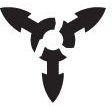
is the seal of the guildpact.
Dissension - Debuting the last three guilds, this set is the 60th set printed. The guilds are the Azorius, a blue-white guild built around flying and maintaining the status quo, with their ability, Forecast. Forecast is a cost that, when paid during the upkeep, reveals the card and plays a lesser effect of the spell. The Rakdos cult is run by the demon Rakdos and is black-red, focusing on destruction with their mechanic, Hellbent, which makes their spells more powerful if you have no cards in hand. The final guild is the bio-experimentalist Simic, blue-green masters of life. Thier ability, Graft, is basically modular, except it allows you to move the counters when new creatures come into play instead of when that creature dies. It’s set symbol is the guildpact seal, broken.
Time Spiral Block
A welcome re
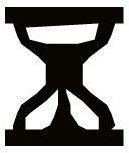
turn to younger days, Time Spiral shows the repercussions of the invasion of Dominaria, and the rifts in time and space that it caused. Rifts in time are being sealed, but each one requires the sacrifice of a planeswalker, including Karn, Multani, and Leshrac.
Time Spiral - With a theme of the Past, Time Spiral brings forward many old cards, complete with the old card design, and a new purple set symbol. These cards are reprints of old cards from sets seen in the past. Kavu, Merfolk, Slivers, all made their return. It does include three new mechanics, though. Flash, which allows a card to be played at instant speed. Split-Second, which resolve the moment they come into play rather than go onto the stack. Finally, suspect exiles a card with counters on it, and removes one per turn. When the counters are gone, the card is played. The set symbol is an hourglass.
aos - themed around the present, in alternate history, Planar Chaos presents a series of what “might have been” cards. Many cards are popular and powerful old cards, printed in a different color with a different flavor. They include such favorites as Damnation, a black wrath of god, or Blood Knight, a red Black Knight. It’s set symbol is a mobius strip.
Future Sight - Themed around the future, this set shows a “what could be” set of cards. A large number of abilities are added or changed here, showing possible futures that Magic might take. Such abilities include:
-
Absorb X: prevents X damage per source.
-
Delve: subtract from a card’s cost per card you exile from your graveyard.
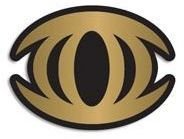
-
Frenzy X: +X/+0 when not blocked.
-
Grandeur: an effect on a legendary permanent that happens when you discard a card with the same name.
-
Gravestorm: Storm, but with cards put into graveyard instead of played.
-
Lifelink: spirit link’s effect.
-
Poisonous: deals damage in the form of poison counters.
Many more, as well as many old abilities being keyworded, appear in the wiki linked above. Future Sight’s set symbol is an eye.
Lorwyn and Shadowmoor Block
Inspir
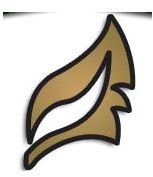
ed by welsh mythology, this four-set block (or rather, these two two-set blocks) twist names around, making merfolk Merrow, goblins Boggarts, and introducing Kithkin as a tribe of white soldiers. The block focuses heavily on tribal mechanics, so each of these is important. Lorwyn is the grand debut of the Planeswalker card type.
Lorwyn - First of four blocks, Lorwyn introduces the Clash mechanic, which is like the War card game, where you reveal the top card
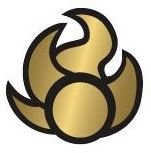
of your library and the person with the highest mana cost card wins the clash. Aside from that, Lorwyn is light on new abilities, as it comes right after a major rules change. It’s set symbol is a flamekin’s head.
Morningtide - Second and final set of the Lorwyn block, the third set was cut off and split into two, to make a whole new block. It includes three new mechanics. Kinship cards check the top card of your library to see if it’s a certain type, and if it is, has an effect. Reinforce lets you discard a card and pay a cost to give a creature X +1/+1s. Prowl was only se
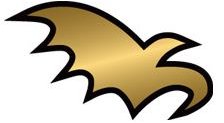
en on rogues, and was an additional effect if a card of the same creature type dealt damage to an opponent that turn. It’s set symbol is a sun rising.
Shadowmoor - Turning the first two blocks on their heads, the idyllic Lorwyn and sunny Morningtide become the dark, paranoid, and corrupted Shadowmoor and Eventide. The set deals heavily in the duality with Lorwyn. Due to an event called the Aurora, the plane and its inhabitants are twisted and changed. Mechanics include Wither, which a creature deals damage as -1/-1 counters instead of damage. Persist, where when a creature dies, it comes back with a -1/-1 on it. Conspire lets you tap two similar tribe creatures to copy the spell. Finally, some c
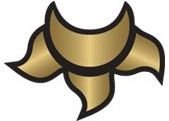
ards have an actual untap mechanic. It’s set symbol is the reverse of Lorwyns, and is the crown of the reaper king.
Eventide - The mirror of Morningtide, with a set symbol of an eclipsed sun, Eventide continues the duality of the Lorwyn and Shadowmoor blocks. It’s two abilities are Retrace, which allows you to play a card from the graveyard by discarding a land, and Chroma, which deals with the number of mana symbols in the mana cost (so colored, not colorless mana.) Interestingly, the card Figure of Destiny, which features the ability to pay mana to make it larger permanently, was the precursor to the Level Up mechanic debuted two blocks later, in Zendikar.
Shards of Alara Block
The Shard of Alara are one plane fractured into five mini-planes, each with one primary mana color, two secondary mana colors, and a complete lack of the other two colors. This shows extremely focused evolution of each set of colors, Alara introduced the Mythic r

arity, a more rare version of rare. The shards are the white Bant, the blue Esper, the black Grixis, the red Jund, and the green Naya. The plot follows the planeswalkers Elspeth, Tezzeret, Sarkhan Vol, and Ajani as they deal with the coming Conflux. The conflux, it is revealed, is a plot by Nicol Bolas to merge the shards once more into one world, and gain their power for himself.
Shards of Alara - The first set in the block is the introduction of each shard and their respective themes. Bant focuses on soldiers with their Exalted mechanic, which makes a creature larger when it attacks alone. Esper focuses on artifacts, and is the first set to include colored artifacts. Grixis is a plane of demons and zombies, with Unearth allowing you to bring creatures from the graveyard back for a turn, then exiling them. Jund has Devour, where a creature can eat smaller creatures when it comes into play, to make itself larger. Finally, Naya rewards the player for playi
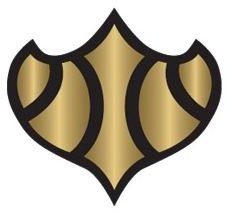
ng high mana cost creatures, by making 5+ cost creatures trigger abilities. Shards’ set symbol is a five-shard crystal.
Conflux - The Conflux is Nicol Bolas’s plan to merge the shards back into one, with untold destruction and mass mutation as a result. Bolas hasn’t brought the shards into one world yet, but he has aligned them, so their edges brush up against one another. This allows cross-contamination, with several cards with protection from certain colors as explorers of these new worlds. Conflux brings two old mechanics back; basic landcycling, and Domain, the latter from Invasion. Conflux’s set symbol is a five shard shield.
Alara Reborn - Alara Reborn is

the fruits of Bolas’ labor, all five planes merged into one world once more. As a result, every single card in the set is a “gold” card, using at least two colors of mana. With each plane merged, each color is experiencing something it never has before, and everything has to adapt. Bolas moves on, away from the plane, but the damage is done. Reborn only introduces one new mechanic; Cascade. Cascade spells, when you play them, have you reveal cards from your library until you reveal a nonland spell that costs less. You can then play that spell for free, and put the rest of the cards on the bottom of your library in random order. Reborn’s set symbol is the five shards, bound together.
This post is part of the series: Magic the Gathering Sets, Symbols, and Trivia, Part 2
Did you know Magic the Gathering has a plot? That each set has a symbol, and each symbol has a meaning in that plot? Well, whether you knew that or not, this article will explain each set and it’s symbol. Check back often for updates!

